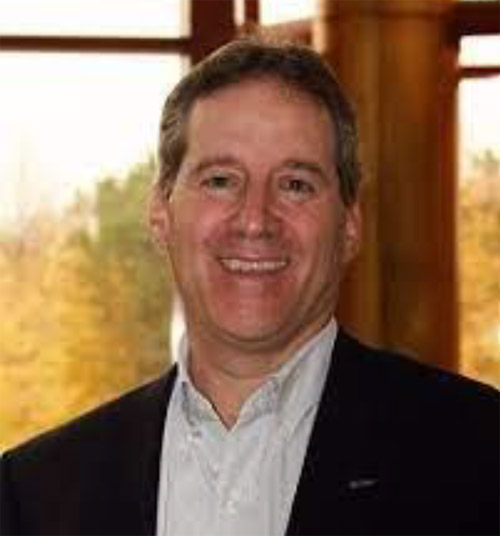|
|

|
  
2021/7/10
Golfs
AUDUBON INTERNATIONAL: BRINGING GOLF ON PAR WITH THE ENVIRONMENT
Considering the 35,000 golf courses split over more than a million acres of Earth’s land (half of which are in the United States), one might take a swing at some serious environmental questions such as the taming of wild landscapes, the cost to surrounding ecosystems, and water management.
Looking to solutions, Audubon International has brought an A-game to the course with the Audubon Cooperative Sanctuary Program for Golf (ASCP for Golf) -- an award-winning education and certification program that assists golf courses in environmental protections while preserving the natural heritage of the game.

An average–sized golf course of about 150 acres can potentially strip a vast and complex ecosystem and pose threats to water quality and supply. Audubon International has developed Standard Environmental Management Practices to help enhance the valuable natural areas and wildlife habitats, improve efficiency, and minimize harmful impacts of golf course operations.
WATERTODAY spoke with Frank LaVardera, Director of ASCP about the ‘fairways and greens’ of becoming a certified Audubon International ASCP for Golf member.
“We have been working with over a 1,000 fully certified courses in 34 countries.”

Whistler’s mountain golf experience at an ACSP certified member. British Columbia, Canada
The ACSP assists each golf course member to take stock of its environmental resources and any potential liabilities, then develop a plan that fits its unique setting, goals, staff, budget, and time. Audubon International provides information to help golf course personnel with six key environmental components:
- Environmental Planning
- Wildlife and Habitat Management
- Chemical Use Reduction and Safety
- Water Conservation
- Water Quality Management
- Outreach and Education
“We feel it’s important for courses that go through our program to inform neighbors in the community the actions of the course to help dispel the myths of the detrimental effects of golf courses to the environment.”
Capilano Golf Club an ACSP member, fly over. Click here
Canada has 95 certified members (Statistics Canada estimates that there are 2,400 golf course in Canada). Members must re-certify every 3 years with a paper documentation summary of their operations and an on-site visit from Audubon on alternate years.
On an 18-hole golf course usually there will be 70 acres of managed turf. All irrigated.
“Our basic premise is to look at how those 70 acres can be better managed. If we can chip away at that managed area down to 65 acres, we can start to see the pay-off – less water use, a return to the natural state, a return of wildlife.
“Irrigation leads in maximum efficiency procedures. It is vital to make sure the water is going where it is meant to go, that walkways are not being watered for example.
“Understanding the weather is important. Courses are encouraged to have a weather station so if rain is in the forecast there is no need to water. A lot of course superintendents are guilty of over-watering. There is the premise that they will lose their job if the course isn’t ‘green enough’.”
Understanding the soil and soil conditions is also necessary. “Is there enough moisture in the soil?”
LaVardera adds that courses coming into the program have been able to reduce water consumption by 15-25%.
“We are really big in understanding water quality in our operations especially on courses in urban areas. We look at source, water on the course and what happens to the water as it leaves the course.”
Frequent testing and record keeping is mandatory. “In urban areas we find that the water coming in is nutrient rich and in many cases, we have seen water quality improving on the course when it leaves. It’s really nice when a superintendent can pull out the scientific data showing nitrogen levels in the water leaving the course are lower than when the water came in.”
How is it possible to improve water quality?
Safeguards in equipment wash do not allow the nutrient-rich grass cuttings wash water to be discharged. It is filtered and recycled.
“Vegetative buffers to prevent nutrient rich water from entering ponds is a required safeguard. Another advantage of the vegetative buffers is that wildlife will return once the natural plant life is restored.
“We encourage the use of nesting boxes for birds and ways to entice water-fowl. This all helps control the insect population.
Working in harmony with nature has other pest-control benefits. “By leaving dead trees, owls are attracted to the course. One owl can consume 8-12 mice an evening.”
In addressing the issue of chemicals and fertilizers, LaVardera says the ASCP takes a proactive stance such as ‘scouting’.
“Record keeping is important to check and observe patterns over time. For example, if weeds are a problem on one hole it is only necessary to deal with that area – not the entire course.
“Many clubs have a Greens Committee. They are asked to discuss their thresholds. Can they tolerate some weeds before they have to use chemicals?”
Proper storage of chemicals and managing potential spills is also mandatory.

Frank LaVardera Director of ACSP at Audubon International
“Getting involved is easy. Being a responsible environmental manager is a key part of running a successful golf course and the expertise of Audubon International’s staff is there to help.”
The green bottom line of golf is a hidden business value in being an environmental steward.
An effective environmental management program can result in reduced insurance premiums, reduced costs for labor, energy, water, pesticides, fertilizers, and equipment wear.
“We are proud of our certified members. They have demonstrated their commitment to environmental stewardship by completing our multifacted certification process thereby reducing water and chemical usage, increasing wildlife habit areas, and more.”
|
|
|
Have a question? Give us a call 613-501-0175
All rights reserved 2025 - WATERTODAY - This material may not be reproduced in whole or in part and may not be distributed,
publicly performed, proxy cached or otherwise used, except with express permission.
|
|
| |